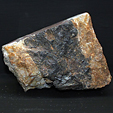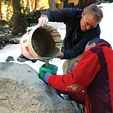All Articles
Legislative and Regulatory Update
March 2002 by Staff
• Pacific Legal Foundation files suit to de-list Klamath salmonThe Pacific Legal Foundation (PLF) announced a new legal challenge that seeks to overturn the federal government’s listing of the Southern Oregon/Northern California coho salmon (Klamath Basin salmon) as threatened under the Endangered Species Act (ESA).
“We expect that victory in this case will go a long way toward restoring environmental balance to the Klamath Basin,” said Russ Brooks, of Pacific Legal Foundation.
“The Fisheries Service is guilty of using junk science to advance a political agenda. Our rivers and streams are teeming with salmon, yet farmers have been pushed into bankruptcy, businesses are closing, and a way of life is being destroyed while government officials explain away listing fish that really aren’t endangered at all,” said Brooks.
ESA protection of Northern California/Southern Oregon coho living in the Klamath River was a significant factor in the government’s decision to shut down water deliveries to Basin farmers in the Spring of 2001. The lawsuit, Oregon Grange v. National Marine Fisheries Service, marks the second time that PLF has challenged salmon listings brought under the ESA.
In September, 2001, PLF won a major victory in Alsea Valley Alliance v. Daley, which challenged the Oregon coast coho listing. In that case, a federal judge affirmed that hatchery-spawned salmon are biologically indistinguishable from so-called “wild” salmon and ruled that listing the Oregon coast coho as endangered was “arbitrary.” Judge Hogan’s conclusions in the Alsea case—that the government had created the unusual circumstance of two genetically identical coho salmon swimming side-by-side in the same stream, while one receives ESA protection and the other does not—is the basis for the new case.
“It is time to end the nonsense and return some common sense to species listings,” Brooks said.
During a news conference, Brooks and Klamath farmers also discussed the National Academy of Science’s preliminary report on the science used as a basis for the Klamath Basin water shut off.
“The report offers hope for victims of the Basin, but it doesn’t put the plow in the field,” said Brooks.
During the days prior to the announcement of the lawsuit, Klamath farmers won a major victory when the National Academy of Sciences essentially agreed with them. In an Independent study, the academy stated the government’s decision to cut off water to the farmers was based on flawed science.
There was “no substantial scientific foundation” for the ruling, the report said.
The Pacific Legal Foundation can be found on the Internet at: www.pacificlegal.org
• Draft EIS on Suction Dredging in the Siskiyou National Forest
The Draft Environmental Impact Statement (EIS) on Suction Dredging in the Siskiyou National Forest (SNF) has been released. An initial review revealed the Draft EIS is severely slanted toward the environmental extremist position.
As an example, the Draft EIS states that only one dredge would be allowed on each claim, yet there is no scientific study mentioned or even hinted at that justifies such a restriction.
The 159-page document attempts to justify numerous other restrictions. Because of limited space, we are unable to provide a complete review here, but ICMJ’s response, along with suggested comments, will be posted on our website at www.icmj.com by the time you receive this issue.
Time is of the essence. If you did not receive a copy of the Draft EIS, we would suggest getting access to a computer so you can read it online. The entire document can be found at www.fs.fed.us/r6/siskiyou or you can click the link on our home page.
Comments must be postmarked by March 16, 2002. Mail comments to:
Siskiyou National Forest Hdqtrs.
PO Box 520
Medford, OR 97501
Comments can also be hand-carried to:
333 West 8th St.
Medford, Oregon
• More Siskiyou National Forest news
John Holleman, of the Oregon Independent Miners, and Tom Kitchar of the Waldo Mining Association, stated they received clarification of policy regarding forest regulations and the legality of small mining operations in a letter from Deputy Chief Thompson of the US Forest Service. Thompson advised that the Northwest Forest Plan does not supersede 36 CFR 228 Mining Regulations.
Mineral operations are defined in the Northwest Forest Plan by the following language: “Such plans and bonds must address the cost for removal of facilities, equipment, and material; recontouring disturbed areas to near premining topography, isolating and neutralizing or removing toxic or potentially toxic materials, salvage and replacement of topsoil, and seedbed preparation and revegetation to meet aquatic conservation strategy objectives.” This language describes activities meeting the “likely to cause significant surface disturbance” test for which an operating plan must be filed and a bond posted. Applying the standard and guideline to activities not meeting the “likely to cause significant surface disturbance” test is inappropriate and contrary to current laws and regulations.
This should provide clarification to US Forest Service staff located in the Siskiyou National Forest (SNF), which is covered by the Northwest Forest Plan, and the same letter went to the SNF staff.
SNF previously required Plans of Operation for such insignificant activities as panning, sluicing, metal detecting, and suction dredging. The clarification letter should correct this problem and allow the filing of a Notice of Intent rather than a Plan of Operation.
• District Court rules in favor of Nicolet Minerals
Wausau, Wisconsin (AP)—A state appeals court upheld a 1996 agreement between a northern Wisconsin town and the company that wants to build an underground zinc and copper mine near Crandon.
The ruling is the latest legal victory for supporters of the mine, and it keeps the process of seeking state regulatory approval on track.
The 3rd District Court of Appeals said the agreement between the Nashville Town Board and Nicolet Minerals Co. conformed with state law and resolved all zoning issues needed to allow the mine’s development.
“It is valid and enforceable. As a result, the town’s resolution to rescind the local agreement was invalid,” the three-judge panel said.
The unanimous decision upheld a March 2001 ruling by former state Supreme Court Justice Janine Geske, who was acting as a Forest County Circuit Court Judge. She upheld the local agreement and said the town board’s 1998 decision to rescind it after mining opponents were elected to the board was invalid.
• State Supreme Court backs mining company
Denver (AP)—A company that wants to mine molybdenum near Crested Butte can use water from tributaries of the Gunnison River, the Colorado Supreme Court ruled.
The decision issued reverses a state Water Court ruling that denied Mount Emmons Mining Co.’s application for a water right.
Water Judge J. Stephen Patrick ruled in 1999 that Mount Emmons failed to show there was enough water for the mine and that it didn’t have a contract with the U.S. Bureau of Reclamation. The water rights belong to the government but are subject to Colorado law.
Justice Rebecca Kourlis wrote in the Supreme Court’s unanimous opinion that the federal government has said at least 60,000 acre-feet of water can be used by projects in the Gunnison River basin. The mining company, therefore, didn’t need an individual contract with the Bureau of Reclamation, she said.
What the Water Court needs to determine is how much of the water would be left after mining, Kourlis said. Mount Emmons said it needs 1,500 acre-feet of water a year, taken from the Slate River and Carbon Creek, both tributaries of the Gunnison. An acre-foot is about 326,000 gallons water, which could last a family of four for a year.
In December 1999, Phelps Dodge Corp. bought Mount Emmons. A spokeswoman for Phelps Dodge said the company had not reviewed the ruling, but it appeared to be positive.

Baker City is Defined by Gold Rush
When they strung up poor Bogs Greenwood on a ranch near here in 1864 for murder, most probably figured it was the start and finish of his moment of fame. But when a Main Street bank building was torn down decades later, a time capsule turned up, and there was Bogs’ skull, along with a brief biography.
Legislative and Regulatory Update
• Dredging bill needs your attention
• Miners take the offensive
• Cap-and-trade legislation
Critical Minerals: Tungsten
 Because tungsten minerals are heavy, exploration can be done using stream sediment samples. Prospectors looking for gold have found scheelite or wolframite in their placer concentrates, and in some cases this has led them to make important tungsten finds.
Because tungsten minerals are heavy, exploration can be done using stream sediment samples. Prospectors looking for gold have found scheelite or wolframite in their placer concentrates, and in some cases this has led them to make important tungsten finds.
The 10-Ton Boulder: Expanding Grout Demolition
 Imagine you have located a source of virgin placer ore containing immense gold value. Now imagine that there is a 10-ton monolith of extremely hard gneiss in between you and payday.
Imagine you have located a source of virgin placer ore containing immense gold value. Now imagine that there is a 10-ton monolith of extremely hard gneiss in between you and payday.
Hidden Value in Old Tailings
The 15 rare earth elements were discovered long after the gold rush began to wane, but demand for them only took off over the past 10 years...
PLP Gets the Key!
I am an electrical contractor and a Board Member of Public Lands for the People (PLP). I have clients, a husband and wife, who own private property in the Los Padres National Forest. There are two ways to access their property. Both are pilots and able to fly in via small plane or helicopter, which for me was an exciting perk of working at this property.
Legislative and Regulatory Update
• Changes to wetlands
• 43 CFR 3809
• Scaled-back version of CARA passes in the dead of night
• Sierra Nevada Framework
Subscription Required:
The Bawl Mill
• Our Readers Say
• Greens Force Strategic Mine Out of Business
• Silver Strike in Happy Camp, California
• Gold in New Hampshire
• Fabled 1933 Gold Coin Up For Sale
• The Douglas Creek Placer District, Medicine Bow Mountains, Southeastern Wyoming
• Picks & Pans: The California State Nugget
• Aerial Photos
• Mojave Desert Placer Mining
• Mining Camp Adventures—The Collinsville-Twin Creek Goldfields
• Monetary Freedom and Accountability Act
• Company Notes
• North Korea Seeks Outside Help to Modernize Mining
• Aussie Gold—A Look at Tasmania
• Looking Back
• Melman on Gold & Silver
• Mining Stock Quotes and Mineral & Metal Prices
Free:








